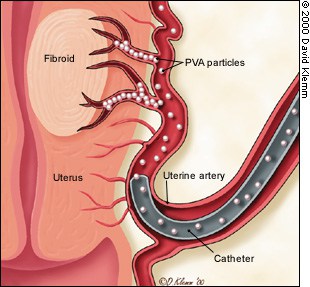By the age of 50, up to 70% of women in Australia could be affected by uterine fibroids, however, it’s likely that many are unaware of the minimally invasive uterine fibroid embolisation treatment (UFE) available, and instead undergo invasive and potentially unnecessary surgery.
A recent US poll released in August 2017 by the Society of Interventional Radiology (is there more recent research, or Australian research?) found that only 44% of US women diagnosed with uterine fibroids have ever heard of UFE. The poll also indicated wide misconceptions about uterine fibroids including development risks and treatment options.
What Are Uterine Fibroids
 Uterine fibroids (also known as leiomyoma) are very common, benign (non-cancerous) growths that develop in the muscle wall of a woman’s uterus. These fibroids are common in fertile women, and usually shrink after menopause.
Uterine fibroids (also known as leiomyoma) are very common, benign (non-cancerous) growths that develop in the muscle wall of a woman’s uterus. These fibroids are common in fertile women, and usually shrink after menopause.
Fibroids often produce no obvious symptoms (asymptomatic), with patients unaware of their presence until found incidentally on examination or via medical imaging. However, fibroids can cause symptoms depending on their size and location. Symptoms may include pelvic pain, heavy bleeding, increased period pain, and increased frequency of urination. Fibroids can also be associated with infertility.
Whilst invasive surgeries and procedures like hysterectomies and ablations are necessary for many conditions, they may not be needed to treat uterine fibroids. Sometimes, however, they are presented as the one or best option to treat these non-cancerous growths.
A minimally invasive alternative is Uterine Fibroid Embolisation (UFE).
What is Uterine Fibroid Embolisation?
Uterine Fibroid Embolisation (UFE) has been used to treat uterine fibroids for over 20 years and has an established role in the management of symptomatic fibroids. This procedure is conducted under sedation and a local anaesthetic and can only be performed by a specialist interventional radiologist with expertise in the area.
UFE involves a tiny catheter being inserted through the wrist or groin and manoeuvred into the uterine artery under X-ray guidance. Tiny particles are then inserted into the arteries supplying the fibroids, reducing their blood flow and causing them to shrink and die over time. The whole procedure takes about 90 minutes and no abdominal incisions or stiches are required.
Benefits of UFE
-
- UFE is a very effective procedure with a success rate of approximately 85% and is approved by Medicare.
-
- The procedure offers a fast recovery and is very well tolerated; most patients can go home the next day.
-
- It’s minimally invasive and safer than other alternatives; the risk of major complications is much lower for UFE than other surgical treatment options.
-
- Most patients see a dramatic improvement in their symptoms and a decrease in the size of their uterine fibroids.
UFE is endorsed by the Australian RANZCOG who state that the UFE is an effective, less invasive alternative to traditional methods, with fewer complications and a quicker recovery.
Risks of UFE
UFE is generally considered to be a very safe procedure, however, like all medical procedures it carriers a small risk of complications, including:
-
- Fibroid detachment – up to 3% of women will pass small pieces of fibroid some months after the procedure, because of the fibroid dying and detaching from the uterine wall. It is not usually dangerous.
-
- Haematoma – a small bruise may form at the needle’s insertion site, but this is quite normal and usually requires no intervention.
-
- Pelvic Pain – patients may experience some mild pelvic pain in the days following the procedure. This pay may feel like period pain and usually be managed with over-the-counter painkillers.
-
- Infection – the uterus and needles insertion site may become infected if not adequately cared for following the procedure.
-
- Hysterectomy – in very rare cases, UFE can lead to severe infections and complications which result in the uterus needing removal.
VIRQ work collaboratively with GPs and Gynaecologists to offer you the right treatment for your fibroids. If you suffer from uterine fibroids, your GP or gynaecologist can organise a referral to VIRQ for a discussion about how UFE may benefit you.
